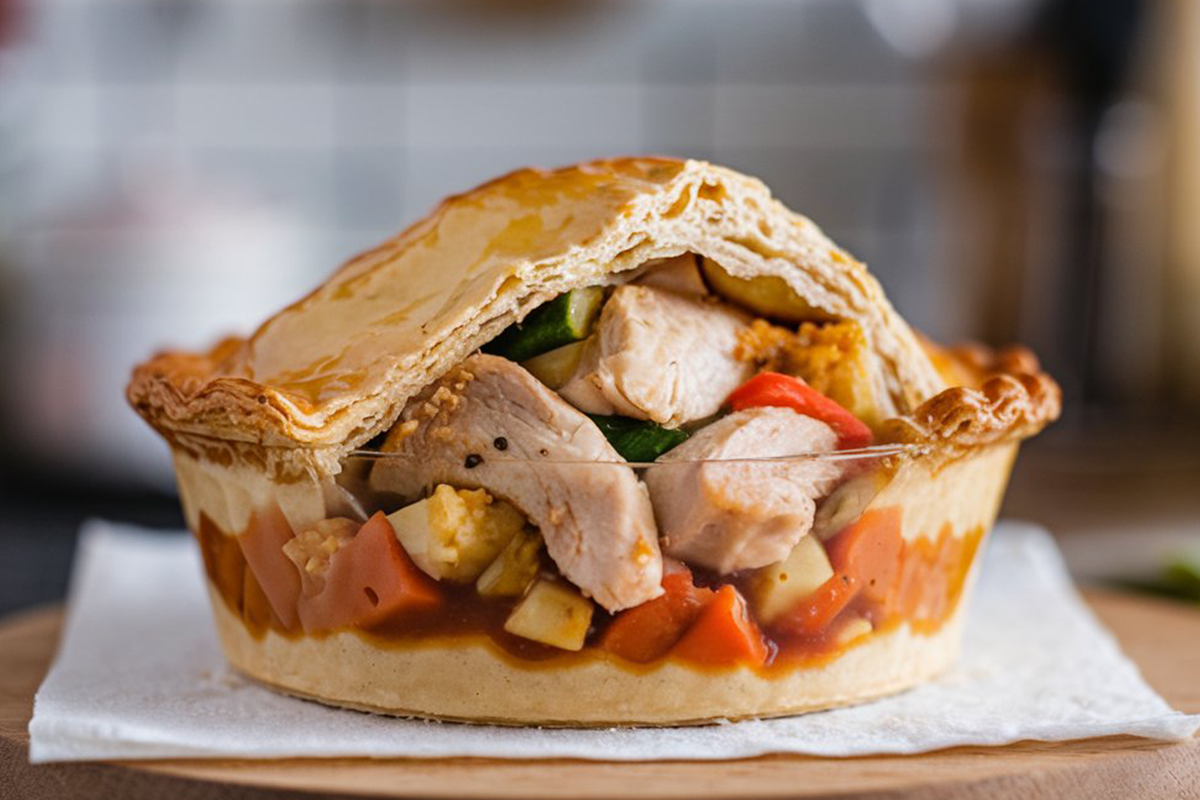Chicken pot pie is a staple comfort food that has warmed dinner tables for generations. However, there’s a common debate among home cooks: Does chicken pot pie need a bottom crust? While some argue for the extra flakiness of a double-crust pie, others prefer the simplicity and ease of just a top crust. This article will explore the different perspectives on the matter, techniques to avoid sogginess, and alternative crust options.
A Brief History of Chicken Pot Pie
Chicken pot pie has a long culinary history, dating back to medieval times. Traditionally, pies were used to encase meats, and the crust acted as a container. Over time, the dish has evolved, and today, chicken pot pie features a creamy filling of vegetables and chicken, baked under a deliciously golden crust.
Some versions, particularly in classic recipes, feature both a top and a bottom crust. However, more modern interpretations have focused on skipping the bottom crust for ease and speed, leaving us with the age-old question: does chicken pot pie need a bottom crust?
Why Some Recipes Include a Bottom Crust
There are several reasons why some chicken pot pie recipes include a bottom crust:
- Texture and Structure: A bottom crust adds a crispy, flaky layer to the dish that some people love. The double-crust also helps the pie retain its shape when cut into slices.
- Traditional Appeal: In many traditional chicken pot pie recipes, both top and bottom crusts are considered essential to the dish’s identity. If you are a purist, having a bottom crust is a must.
For example, many cooks looking to prevent sogginess will use techniques like blind baking, which can help ensure a crisp crust. Check out the techniques discussed in this article on keeping the bottom crust from getting soggy, where the right steps are outlined to preserve that crisp bite.
Arguments Against a Bottom Crust
On the other hand, some recipes skip the bottom crust altogether. Here are some reasons why:
- Convenience: Without a bottom crust, the preparation is simpler and faster, making it a perfect choice for busy weeknights.
- Healthier Option: Omitting the bottom crust reduces the overall calorie count, making the dish a bit lighter.
- No Soggy Crust: For those who struggle with the bottom crust becoming soggy, a top-only crust removes that issue entirely. There’s no need to blind bake or worry about sogginess when there’s no bottom crust to deal with.
Another reason to skip the bottom crust is that there are so many alternative ways to make this dish lighter. If you’re looking for ideas, you might enjoy reading about some alternatives in this recipe for chicken pot pie bowls, where a simplified version of pot pie is served in bowls without any crust at all.
Techniques to Prevent a Soggy Bottom Crust
If you love the idea of a double-crust pot pie but dread the soggy bottom, don’t worry—there are ways to prevent it. Here are some tips to keep your bottom crust crispy:
- Blind Baking: This involves baking the bottom crust partially before adding the filling. By doing this, you allow the crust to firm up and become less absorbent.
- Thicker Filling: Ensure your filling isn’t too runny. A thicker filling will not soak into the crust as much, helping to preserve the crispness.
- Cooling the Filling: Let the filling cool slightly before adding it to the pie. If the filling is too hot, it can create steam, which contributes to sogginess.
For a more in-depth guide on how to prevent sogginess, take a look at this recipe that gives helpful tips on how to keep the bottom crust from getting soggy.
Exploring Alternative Crust Options
If you’ve decided that the traditional bottom crust isn’t for you, or you just want to try something new, there are plenty of crust alternatives to experiment with:
- Puff Pastry: Light, flaky, and elegant, puff pastry adds a nice, buttery texture and can be used as a top-only crust.
- Biscuit Topping: Instead of pie crust, try using biscuit dough for a heartier, more rustic pot pie. Simply dollop biscuit dough on top of the filling and bake.
- Phyllo Dough: For an ultra-crisp and light top crust, consider using phyllo dough layers.
Each of these alternatives offers a unique texture and flavor, and they can be easily substituted into your favorite pot pie recipe.
FAQs
Does chicken pot pie need a bottom crust?
Whether or not to use a bottom crust is entirely up to personal preference. Some enjoy the added texture and structure, while others find it unnecessary and time-consuming.
How do I avoid a soggy bottom crust?
The best way to prevent a soggy crust is to blind bake the bottom crust before adding the filling and to ensure your filling is thick enough. Additionally, allowing the filling to cool slightly before assembling the pie can help.
Can I make a chicken pot pie with just a top crust?
Yes, you can! Many modern recipes opt for a top-crust-only version, which is quicker and easier to prepare. Try experimenting with puff pastry or biscuit dough for a fun twist.
What are some alternatives to traditional pie dough for the crust?
Consider using puff pastry, biscuit dough, or phyllo dough as an alternative to traditional pie dough. Each of these will offer a different texture and flavor to your pot pie.
Conclusion
Ultimately, whether chicken pot pie needs a bottom crust depends on your preferences. Some love the added texture of a double crust, while others prefer the simplicity of a top-only crust. By using techniques like blind baking and experimenting with alternative crusts like puff pastry or biscuit dough, you can create a perfect pot pie that suits your needs.
